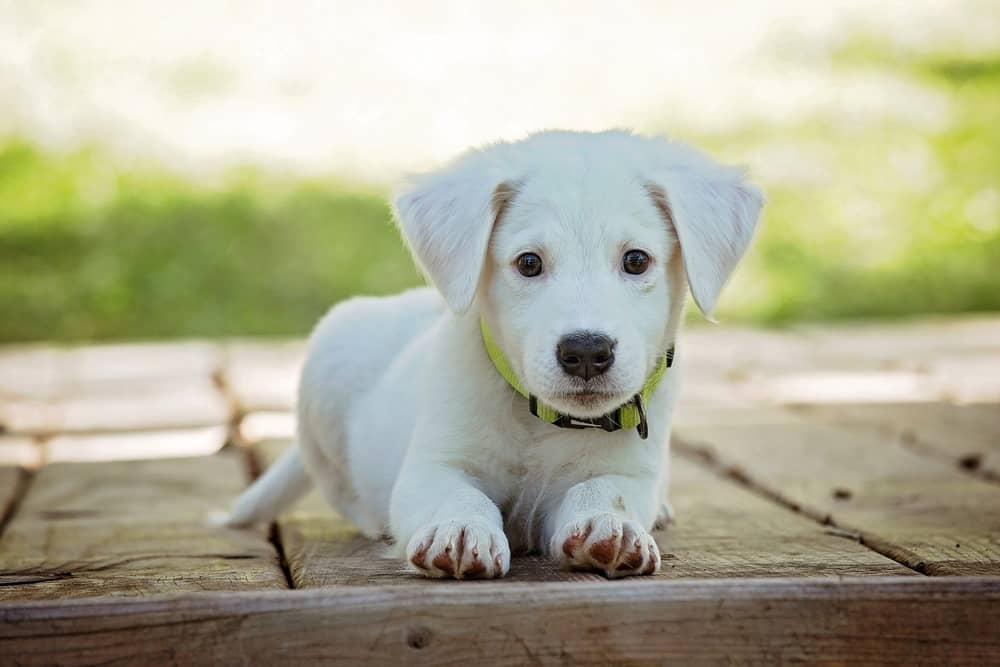
Many dog parents wonder if it’s wise to use human products (like Bactine) on their pets. But sometimes, that’s all you have in your medicine cabinet. The question remains though, is it safe?
Can ou use Bactine on dogs? Bactine can be used on your dog’s minor cuts. It contains benzalkonium chloride, which is an antiseptic and lidocaine, which is a topical anesthetic. The antiseptic component in Bactine can help to counter infections, while the topical anesthetic helps to ease the pain and itching on your dog’s skin temporarily.
Be Aware
While Bactine spray is not toxic, you should always call your vet before using it on your dog. The use of human products that are not formulated for your pet can have serious consequences depending on your dog’s specific condition.
How To Heal A Dog Wound Fast
If your dog is injured, it’s vital to clean the wound. It’s then necessary to evaluate the gravity of the injury and to take him to the vet without delay if the bleeding doesn’t stop or if the wound doesn’t heal completely within a few days.
Even the sweetest dog can have adverse reactions if he is in pain: before starting the care, it’s necessary to calm him down by talking to him in a soft voice then make him lie down.
To be on the safe side, it’s highly recommended to use a muzzle. If required, put him on a leash and have someone help you hold him. Even with these precautions, stay alert to his reactions while keeping calm.
- Start by cutting the hair around the wound with small scissors. Then rinse the wound with clear water and soap.
- Cleanse the wound using a cotton ball soaked in hydrogen peroxides.
- Rub gently to remove debris, dirt, or other foreign objects from the wound.
- Once the wound has been thoroughly cleaned and washed, you can disinfect it with an antiseptic product such as Bactine.
- Once the cut has been properly disinfected, allow it to dry before making a bandage with a clean compress, towel, or a cotton wool pad.
- Secure the bandage in place with tape, while making sure to let the wound breathe (do not hold the bandage too tightly on the skin).
- Change this bandage regularly, once or twice a day, to monitor the condition and progress of your dog’s wound.
- Make sure that there is no redness or other signs of infection, and that the bandage remains dry to prevent bacterial growth.
- For added safety, you can put a few drops of an antiseptic on the clean compress.
How to stop dogs from licking or chewing on their wounds
Contrary to popular belief, your dog’s saliva is not a disinfectant! On the opposite, it can make the situation more dangerous by soaking the wound and leaving germs that are usually present in the tongue, inside the cut.
Using a muzzle or a collar is often required to prevent your dog from licking themselves. It also ensures that the bandage stays on.
Keep Watch!
Not every injury is an emergency, especially if it’s a small cut on your pup’s ears or around the paws. Nevertheless, you should take your pup to the vet when a traumatic injury is extensive and/or deep.
It may also happen that your dog is under stress and doesn’t allow anyone to handle his injury, in which case it’s best to consult your vet who may be able to administer a mild sedative if required.
Beware, the risk of getting bitten is higher when a pooch is in pain. If you notice signs of infection (inflammation, pain, redness…), or if the wound doesn’t heal, it’s necessary to contact your veterinarian promptly.
Related Questions
What antibiotic ointment is safe for dogs? Triple Antibiotic Ointment is a mixture of three antibiotics for dogs: Polymyxin B, Bacitracin, and Neomycin. It can be applied as a first-aid solution for your dog’s wounds. It is utilized to tackle bacterial infections of small cuts, scrapes, or burns on your pet’s skin.
Can you put hydrogen peroxide on a dog? Hydrogen peroxide can be utilized, with certain caveats, to clean your dog’s wound. Because it’s can be very irritating to your pet’s tissues, it should only be used once when you are cleaning the wound the first time. Repetitive use could impact wound healing.
